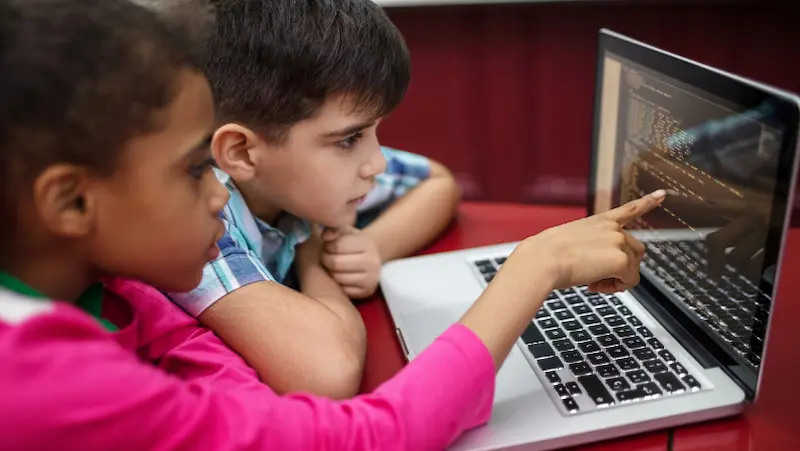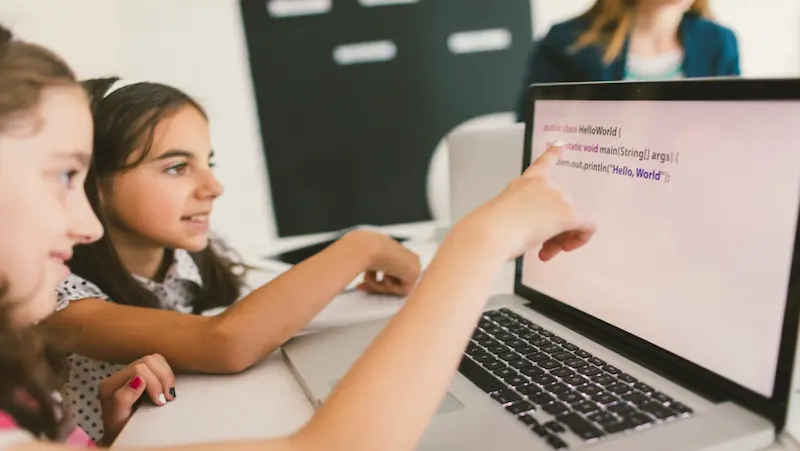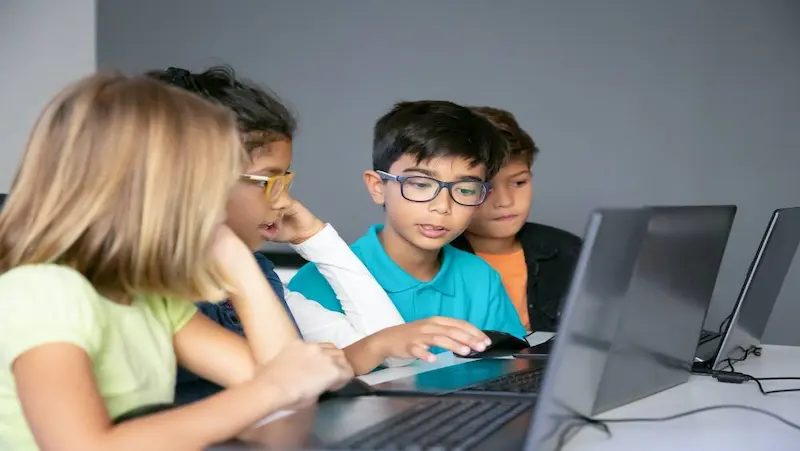Welcome to the intriguing world where young minds embark on a journey through lines of code, shaping their digital destinies. In our rapidly evolving landscape, understanding the significance of tracking a child’s coding progress becomes paramount.
Just as a gardener tends to seedlings with vigilance, nurturing growth and potential, so too does monitoring a child’s coding prowess cultivate a promising future. This exploration delves into the reasons why this voyage matters, illuminating the profound impact it holds for both the individual and the world they are bound to shape.
Table of contents
- Understanding Coding Education for Children
- The Importance of Tracking a Child’s Learning Progress
- Methods and Tools for Tracking Coding Skills
- Fostering Coding Growth and Development
- Overcoming Challenges in the Coding Process
- Parental Role in Supporting Coding Education
- Conclusion
- Frequently Asked Questions
Understanding Coding Education for Children
In a world driven by technology, equipping children with essential skills has never been more important. As we navigate the 21st century, coding education has emerged as a dynamic tool, empowering young minds to not only understand the digital landscape but also to shape it. Let’s delve into the fascinating journey of coding education for children, exploring its evolution, creative potential, and profound impact on problem-solving abilities.

The Evolution of Coding Education in Schools and Beyond
Coding for kids, once reserved for computer science enthusiasts, has now found its way into school curricula worldwide. What started as a niche skill has blossomed into a fundamental competency, akin to reading and writing.
In schools, coding is not limited to computer science classes alone. It seamlessly integrates with subjects like mathematics, science, and even art. This interdisciplinary approach not only enhances students’ technical skills but also fosters critical thinking and collaboration – skills vital for success in the digital age.
Unleashing Creativity: How Coding Enhances Problem-Solving Skills
At its core, coding is a form of creative expression. Through code, children have a canvas to transform their ideas into reality. This creative outlet encourages them to explore, experiment, and find innovative solutions to challenges.
Coding isn’t just about writing lines of text; it’s about breaking down complex problems into manageable steps. This systematic approach to coding mirrors the process of tackling real-world issues. As children learn coding for kids to debug their programs, they simultaneously develop resilience in the face of setbacks – an invaluable life skill.
The Importance of Tracking a Child’s Learning Progress

Beyond Grades: Recognizing the Value of Skill Development
Gone are the days when education solely revolved around memorizing facts and acing exams. Today, we understand that fostering skills like critical thinking, problem-solving, creativity, and communication are equally important.
This is where progress tracking steps in. Instead of fixating solely on grades, it encourages us to acknowledge and celebrate the journey of skill development. Every child learns at their own pace, and progress Tracking Child’s Progress provides a way to appreciate the small victories that lead to substantial growth.
Enlightening Insights: How Progress Tracking Enhances Learning
Imagine this scenario: A child embarks on a new subject, struggling initially to grasp its complexities. With Progress Tracking Child’s Progress, parents and educators can identify these challenges early on. This timely awareness enables them to intervene with tailored support – be it additional practice, personalized tutoring, or alternative learning strategies. As a result, the child gains confidence, knowing that their learning programs for kids journey is guided by a support system attuned to their needs.
Methods and Tools for Tracking Coding Skills

Traditional vs. Digital: Choosing the Right Tracking Method
Embracing the digital age doesn’t necessarily mean waving goodbye to traditional methods. When it comes to Tracking Child’s Progress coding skills, it’s essential to choose a method that aligns with your personal learning preferences. Some folks swear by the timeless art for kids of keeping a physical journal – a dedicated notebook where they jot down new concepts learned, projects completed, and areas they’d like to explore further.
On the other hand, digital methods offer convenience and the ability to analyze your growth more systematically. Spreadsheets, apps, and online coding for kids platforms enable you to log your coding achievements, set goals, and even visualize your improvement over time. The digital route is also beneficial for collaborating with mentors and peers, who can provide real-time feedback and guidance.
Empowering Learning: Top Coding Progress Tracking Tools
In the realm of digital tools, there’s an array of options designed to cater to different learning needs. Let’s dive into a few standout choices:
GitHub: A haven for version control and collaborative coding, GitHub doubles as an excellent skill tracker. Your repository history showcases the evolution of your projects, acting as a visual timeline of your coding prowess.
LeetCode: For those diving into competitive programming for kids and algorithm challenges, LeetCode’s built-in progress tracker helps you monitor your problem-solving skills and identify areas for improvement.
Codecademy: This interactive learning platform not only offers coding courses for kids but also tracks your progress as you complete lessons. It’s a fantastic choice for beginners and intermediate learners alike.
Trello: While not exclusively for coding, Trello’s kanban-style boards can be customized to create a visual representation of your coding journey. Move cards from “Learning” to “Mastered” as you conquer new skills.
Personal Coding Blog: Consider starting a blog to document your coding escapades. Sharing your insights and challenges not only helps you reflect on your progress but also opens the door for feedback and connections with fellow coders.
Fostering Coding Growth and Development

Beyond the Screen: Incorporating Real-World Applications
Coding is more than syntax; it’s the language of problem-solving. We can elevate coding education by bridging the gap between the digital realm and the physical world. Encouraging students to apply their coding knowledge to real-world challenges empowers them to see their impact firsthand. From designing smart traffic solutions to crafting interactive art installations, the possibilities are boundless.
Creative Coding: Encouraging Personal Projects and Innovation
Coding isn’t just about following set paths; it’s about creating new ones. Nurturing creativity through coding empowers individuals to explore their unique ideas and turn them into reality. Allowing room for personal projects encourages innovation and fosters a sense of ownership over one’s learning journey. Whether it’s building a quirky game, a helpful mobile app, or even an AI-driven environmental tool, creative coding classes for kids open doors to uncharted territories.
Overcoming Challenges in the Coding Process

Debugging Frustrations: Teaching Resilience in the Face of Errors
The frustration of encountering bugs and errors is a rite of passage for every coder. Hours spent deciphering cryptic error messages can be disheartening, but they also teach us a crucial lesson: resilience.
Just as a detective unravels a mystery, each bug is a puzzle waiting to be solved. Embracing this challenge with determination not only sharpens your problem-solving skills but also builds the mental fortitude needed to overcome setbacks in any aspect of life.
The Art of Patience: Navigating Challenges with a Growth Mindset
Coding challenges are the building blocks of growth. Patience becomes your compass as you navigate through complex algorithms, intricate logic, and daunting tasks. Adopting a growth mindset, which sees failures as stepping stones toward mastery, empowers you to view setbacks as opportunities for improvement.
Just like a sculptor patiently chisels away to reveal a masterpiece, you too can sculpt your code into a work of art through persistence and patience.
Parental Role in Supporting Coding Education

Nurturing a Positive Learning Environment: Balancing Support and Independence
When it comes to coding education, creating a nurturing and positive learning environment is key. Just as we provide encouragement during their first bike ride, we can offer the same support as they navigate the coding world. Encouraging a growth mindset helps children view challenges as opportunities for growth. Let them know that coding is about problem-solving, and making mistakes is part of the learning process.
Partnering with Educators: Collaborating for Optimal Learning Outcomes
Collaboration between parents and educators is vital for the success of coding education. Educators bring expertise and structured learning, while parents provide valuable insight into their child’s learning style and preferences. Regular communication with teachers allows us to stay informed about our child’s progress and any areas that may need extra attention.
Conclusion
In embracing the realm of kids coding languages, we’re nurturing a boundless frontier of potential for our children. As they grasp the language of technology, they’re equipped with the tools to shape their own future. The journey of empowerment through coding isn’t just about mastering lines of text; it’s about fostering creativity, problem-solving, and a mindset that thrives on innovation.
With each keystroke, we’re paving the way for them to build, create, and conquer challenges we can’t yet fathom. So, let’s guide them on this remarkable path, where the possibilities are as limitless as their dreams.
Frequently Asked Questions
A1. Coding can be a great activity for many children, as it enhances problem-solving skills and creativity. However, just like any interest, it might not be a perfect fit for everyone. Exploring different activities is key to finding what resonates best with your child.
A2. Balancing screen time is important. Aim for a mix of activities, including outdoor play and non-screen hobbies. For coding, start with 30-60 minutes a few times a week and adjust based on your child’s engagement and overall screen time.
A3. It’s common for interests to change. If your child loses interest, don’t worry. Encourage them to explore different activities. Coding can be revisited later or combined with other interests. The goal is to foster a love for learning and creativity.


 We are an army of educators and passionate learners from BrightChamps family, committed to providing free learning resources to kids, parents & students.
We are an army of educators and passionate learners from BrightChamps family, committed to providing free learning resources to kids, parents & students.








